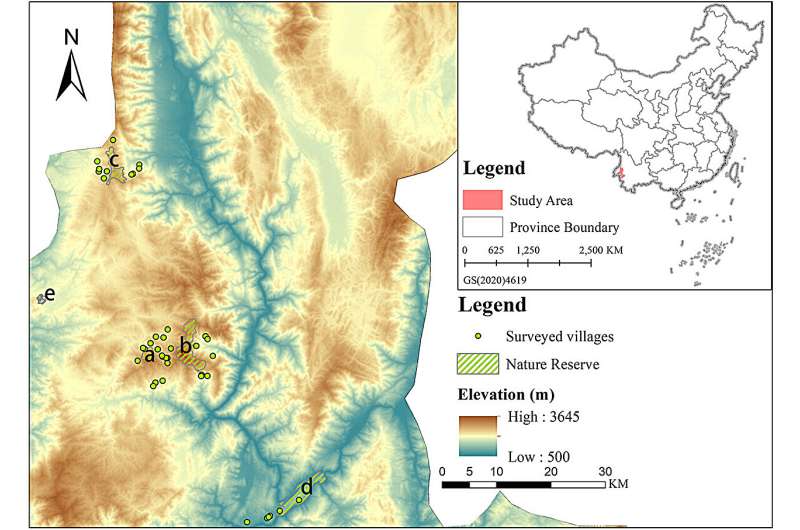This article has been reviewed according to Science X's editorial process and policies. Editors have highlighted the following attributes while ensuring the content's credibility:
fact-checked
trusted source
proofread
Public involvement benefits relationship between nature reserves and local communities: Study

Numerous studies have thoroughly documented the conflicts that arise between nature reserves (NRs) and local communities. In order to develop effective solutions, a comprehensive understanding of the relationship between NRs and neighboring communities is essential and requires focused research on the influencing factors. Unfortunately, limited scientific attention to this issue has made it difficult to establish a link between these two entities, reducing the effectiveness of proposed solutions.
In a study published in Integrative Conservation, researchers from the Xishuangbanna Tropical Botanical Garden (XTBG) of the Chinese Academy of Sciences assessed the relationship and the degree of interaction between the Xiaoheishan NRs (Xhs NRs) in Yunnan and the surrounding communities.
Through implementation of surveys and structural equation modeling analyses, the researchers examined the relationship between the Xhs NRs and neighboring communities, and specifically whether the relationship is characterized by harmony, imbalance, or conflict. They then investigated the factors that influence the degree of coordination among these organizations.
The results showed that the relationship between the Xhs NRs and their respective communities was primarily characterized by a protection-oriented approach. The establishment and policies of the Xhs NRs has a significant impact on the traditional livelihoods of local communities.
Although the Xhs NRs had provided some employment opportunities for local communities, there has been a failure to address broader community development. This oversight has subsequently led to increased tensions and conflicts between conservation objectives and development needs.
Furthermore, the tensions arising from these impacts on livelihoods pose a considerable threat to the effectiveness of conservation management.
"Involving the public, especially local communities, in conservation management is crucial. The introduction of external projects, such as ecotourism initiatives or local infrastructure improvements, is a future way to achieve coordinated development between nature reserves and adjacent communities," said Bai Yang of XTBG.
More information: Xueyan Guo et al, The cooperative development relationship between Nature Reserves and local communities, Integrative Conservation (2024). DOI: 10.1002/inc3.33
Provided by Chinese Academy of Sciences




















